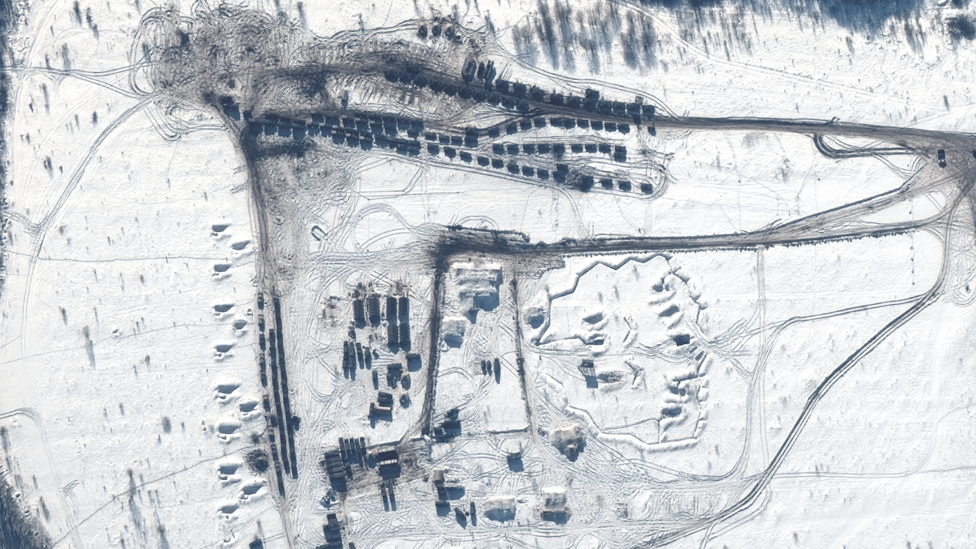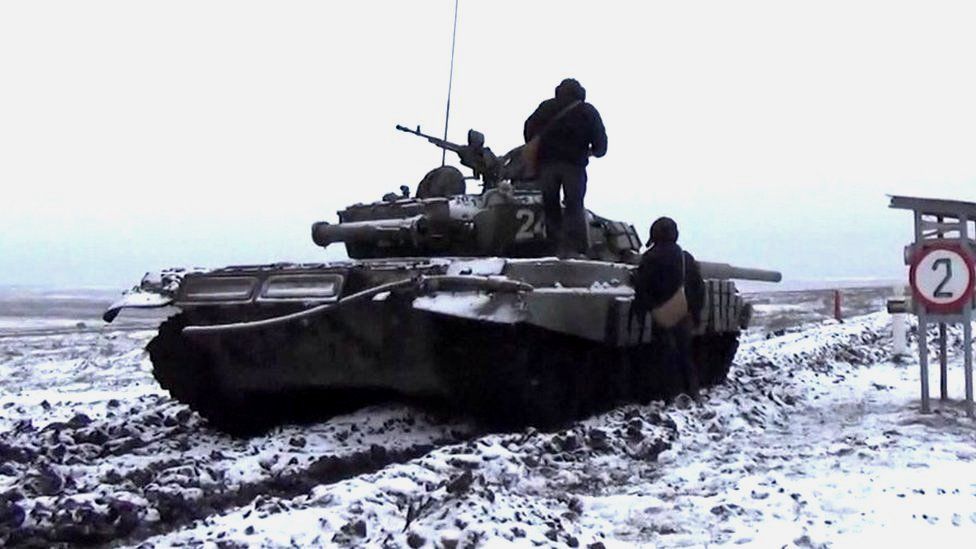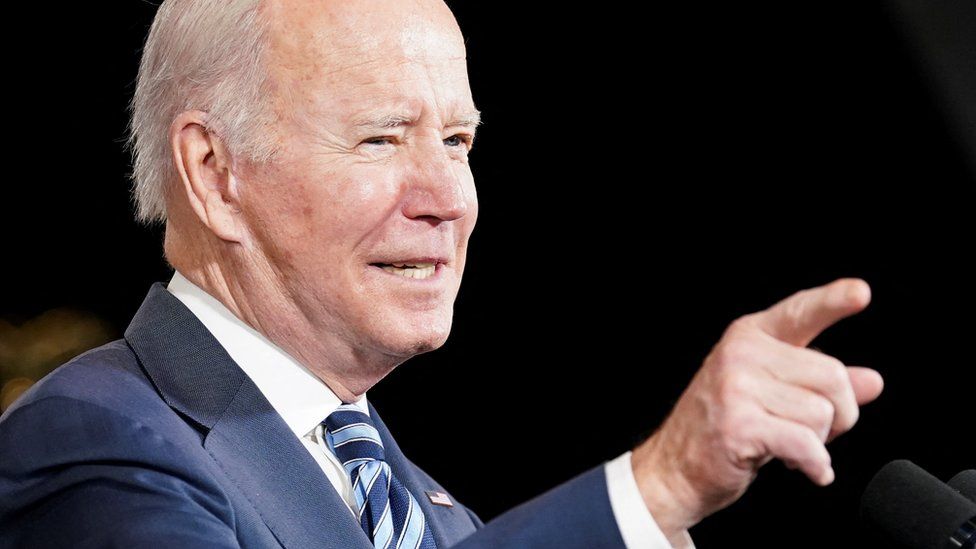
Russia is preparing to fabricate a reason to invade Ukraine, the US says, warning that an attack could happen in the coming days.
President Joe Biden said military action could begin imminently on Thursday, but stressed that a diplomatic solution was still possible.
His top foreign policy official later listed several ways Moscow could stage justification for an attack.
Russia said the claims were “baseless” and accused the US of stoking tensions.
It has repeatedly denied any plan to invade its eastern neighbour. Moscow insists it is moving troops away from the Ukrainian border, but that claim has been fiercely contested by Western powers.
“We have reason to believe they are engaged in a false flag operation to have an excuse to go in,” Mr Biden told reporters outside the White House.
A false flag is a fabricated attack a country stages against its own interests in order to justify a retaliation. The US has for weeks been saying that such a misdirection is part of Russia’s plans.
US Secretary of State Antony Blinken later told the United Nations Security Council that Russia was readying such a move.
He said it was not clear what form a pretext for an attack could take, but that possibilities include “a fabricated so-called terrorist bombing inside Russia, the invented discovery of a mass grave, a staged drone strike against civilians, or a fake – even a real – attack using chemical weapons”.
In the aftermath of such an incident, Mr Blinken said Russia’s government would likely “theatrically convene” an emergency meeting about protecting ethnic Russians in Ukraine – and Russian missiles and bombs would begin striking Ukrainian targets, alongside cyber-attacks.
The US has not provided evidence for the allegation, and Mr Blinken acknowledged that some people may question the claims. “But let me be clear. I am here today not to start a war but to prevent one,” he said.
The concerns were echoed by other Western leaders. Nato Secretary General Jens Stoltenberg warned of “a pretext for an armed attack”, while UK Foreign Secretary Liz Truss and Prime Minister Boris Johnson alleged that a false flag operation was being planned.
This video can not be played
To play this video you need to enable JavaScript in your browser.
The spike in tensions on Thursday came after an exchange of fire between Ukrainian forces and Russia-backed rebels in the country’s east.
Such breaks in the years-long ceasefire are not uncommon. But each side blamed the other for Thursday’s violence.
Ukrainian officials accused Russia-backed separatists of striking a nursery in the town of Stanytsia Luhanska, smashing through a wall into a children’s music room. Three adults – but no children – were injured.
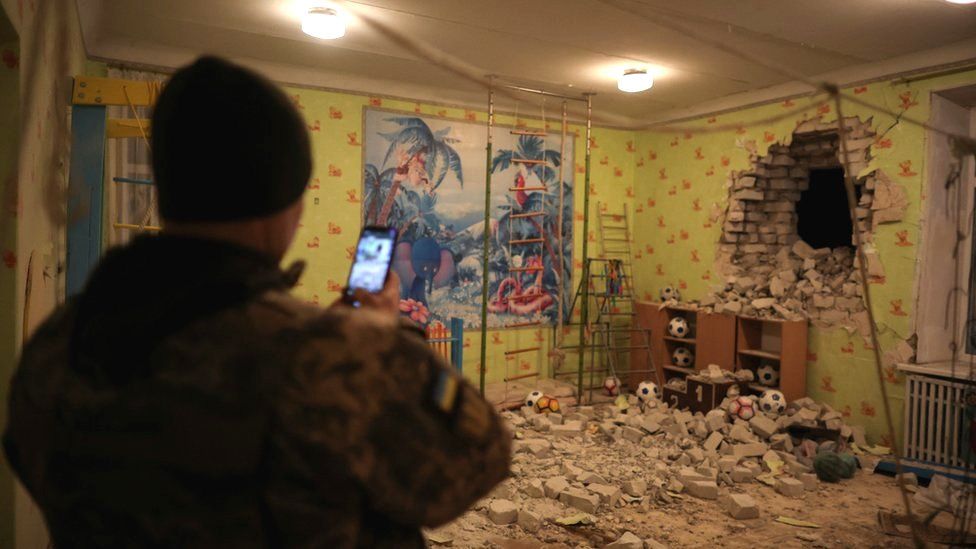
Russia-backed rebels, meanwhile, said Ukrainian forces had shelled a number of locations under rebel control and accused them of escalating the conflict.
There are also competing claims about the build-up of troops along Ukraine’s border.
Russia has said that, following the completion of military exercises, some of its troops are now returning to their bases. It has published video purporting to show tanks boarding trains as evidence.
But US and other Western officials said thousands more troops are arriving and insist there is no evidence of any significant withdrawal. They say that claim is backed up not only by intelligence, but by widely available satellite photographs.
Images taken by US-based commercial firm Maxar Technologies this week show that Ukraine remains surrounded on three sides. But the images do not definitively prove that Russia is about to invade.
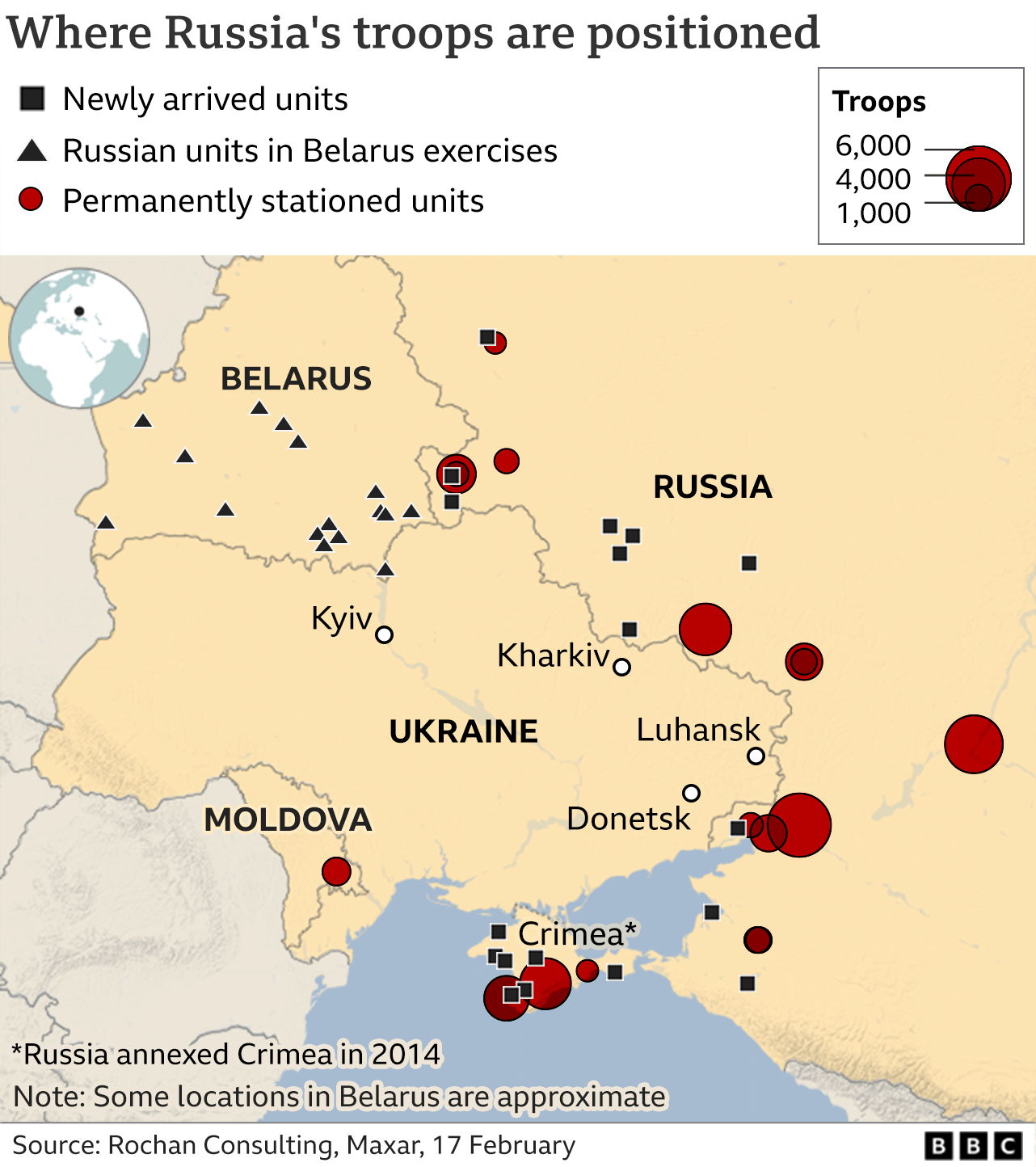
Russia denies all such accusations by Ukraine and Western leaders.
On Thursday, it sent a formal response to US proposals for negotiation in the crisis which both offered a potential route to diplomacy and threatened further action.
In the document, Russia said it was open to discussions about inspections of missile sites on both sides but said the US had failed to address its main security concerns about the expansion of Nato near its border.
The possibility that Ukraine could one day join the Western military alliance is a key part of the ongoing crisis. Russia fiercely opposes such a move, but the US and Nato have not ruled it out.
Russia said that if that issue was not dealt with “military-technical means” would be deployed in response – though it remains unclear what that could amount to.
And on the same day, it expelled the US deputy ambassador to Moscow. The US said the move was unprovoked and described it as a diplomatic escalation.
Despite such concerns, Ukraine’s Foreign Minister Dmytro Kuleba earlier said that “diplomacy is working”.
“We can never say for sure what happens tomorrow, but today we do our utmost” to maintain peace, he said. “We’re very much ready for any situation.”



















